Houston, located in the southeastern part of Texas, is home to a diverse range of bird species. The city provides an excellent habitat for different bird species due to its warm climate, varied terrain, and abundant food sources.
The coastal region of Houston also attracts migratory birds during the winter season, making it a popular spot for bird watching enthusiasts. Houston boasts several parks and nature reserves that offer a perfect setting for birdwatching and studying bird species.
From resident birds such as the cardinal and blue jay to the migratory birds like the Sandhill Crane and the Black Skimmer, the bird diversity in Houston is truly stunning and worth exploring.
1. Red-Bellied Woodpecker
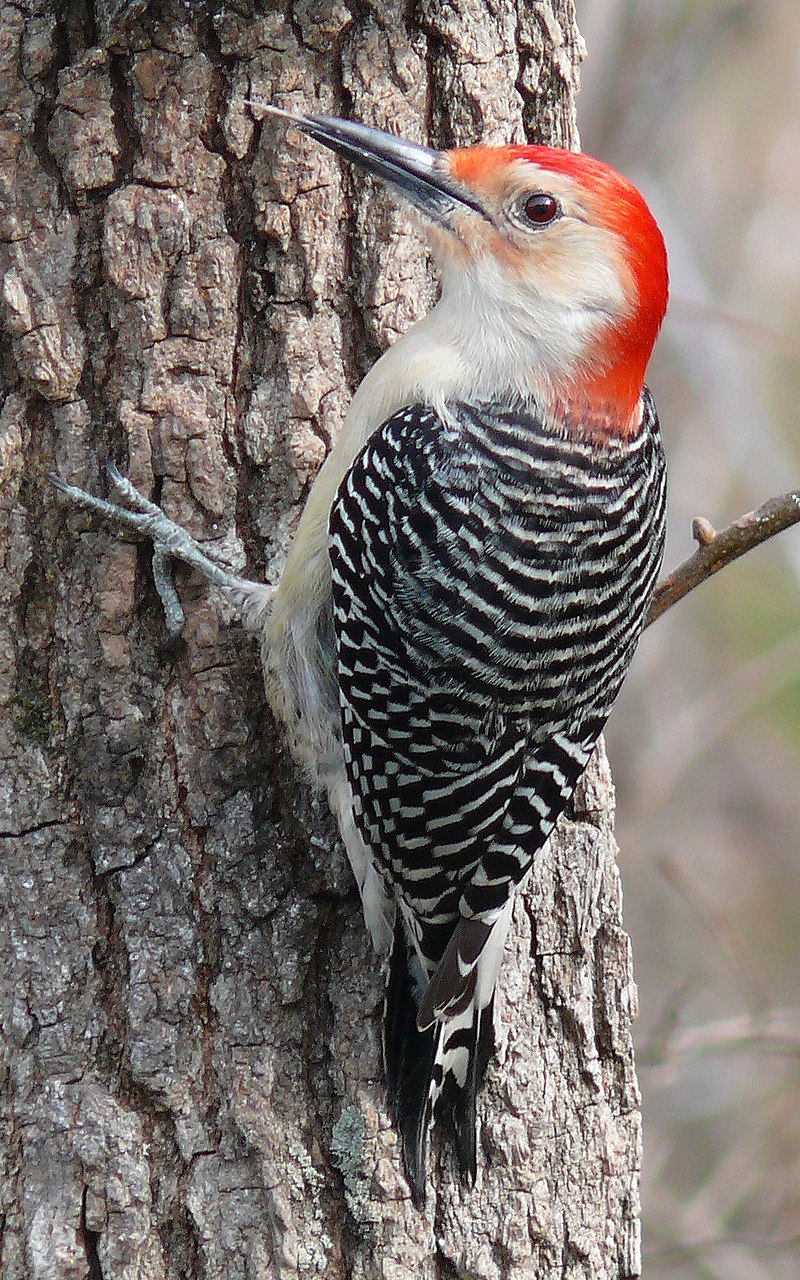
The Red-bellied woodpecker is a beautiful bird with an orange-red crown and nape. It breeds mainly in the eastern United States, ranging from Florida to Canada.
This medium-sized woodpecker of the family Picidae has black wings, white stripes on its back and tail feathers that are barred with black.
Its underside is mostly pale yellow or white but it also features some red coloration around its neck area.
Despite this subtle red hue, it should not be mistaken for the entirely red head and neck belonging to the Red-headed woodpecker of the same genus Melanerpes carolinus.
The Red bellied Woodpeckers diet consists primarily of insects such as ants, beetles and grasshoppers along with nuts fruits berries and tree sap which they will feed upon during different times throughout their life cycle.Scientific classification:
| Kingdom | Animalia |
| Phylum | Chordata |
| Class | Aves |
| Order | Piciformes |
| Family | Picidae |
| Genus | Melanerpes |
| Species | M. carolinus |
Also Featured In: Most Common United States Birds, Most Common Winter Birds
2. Tufted Titmouse

The Tufted Titmouse is a small, cheerful songbird found in North America. It’s part of the tit and chickadee family (Paridae).
It has distinctive white feathers around its eyes, grey-brown wings and upper body, with a pale tan underside.
Its most notable feature is the black crest on top of its head that gives it an inquisitive look. The male also sports a pinkish breast which can be seen.
When singing from high perches during the spring months. This bird loves to eat sunflower seeds or suet at backyard feeders as well as insects in summertime.
You may even see them poking into crevices and bark looking for food.
They are quite social birds too, being often spotted in mixed flocks alongside other species such as nuthatches and woodpeckers all year round.Scientific classification:
| Kingdom | Animalia |
| Phylum | Chordata |
| Class | Aves |
| Order | Passeriformes |
| Family | Paridae |
| Genus | Baeolophus |
| Species | B. bicolor |
Also Featured In: Most Common Songs Birds that Live around You, Birds Commonly Found in New York
3. Carolina Wren
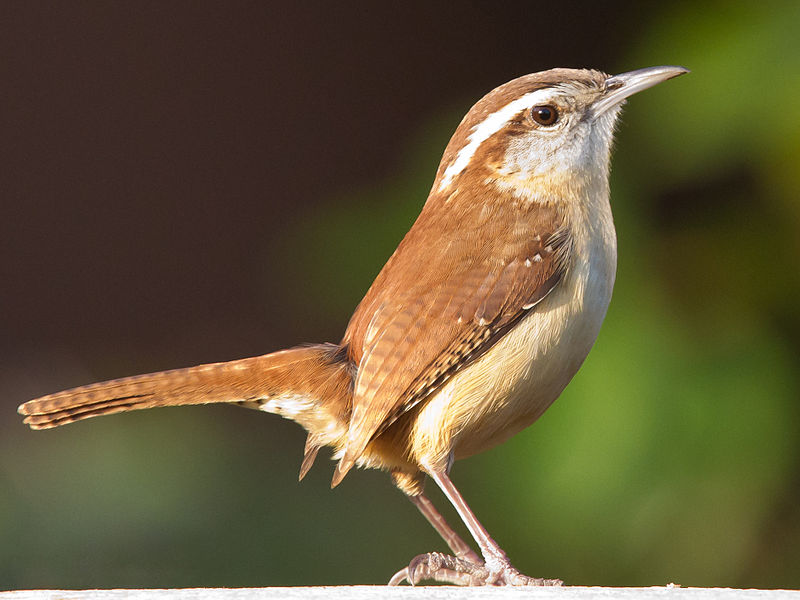
The Carolina wren (Thryothorus ludovicianus) is a medium-sized bird that can be found in the eastern United States, southern Ontario and northeast Mexico.
They typically live in dense shrubbery or thickets near open areas such as gardens, parks and woodland edges.
These birds are quite adaptable when it comes to nesting sites – they will build their nests anywhere from tree cavities to manmade boxes.
Their diet consists of insects, spiders and other invertebrates which they forage for on the ground or among vegetation.
The males have an unmistakable song made up of loud whistles interspersed with trills reminiscent of laughter; you’ll often find these cheerful little birds singing away during early morning hours.Scientific classification:
| Kingdom | Animalia |
| Phylum | Chordata |
| Class | Aves |
| Order | Passeriformes |
| Family | Troglodytidae |
| Genus | Thryothorus Vieillot, 1816[2] |
| Species | T. ludovicianus |
Also Featured In: Birds Live in Arkansas, House Birds You’ll Love to Pet
4. Great Horned Owl
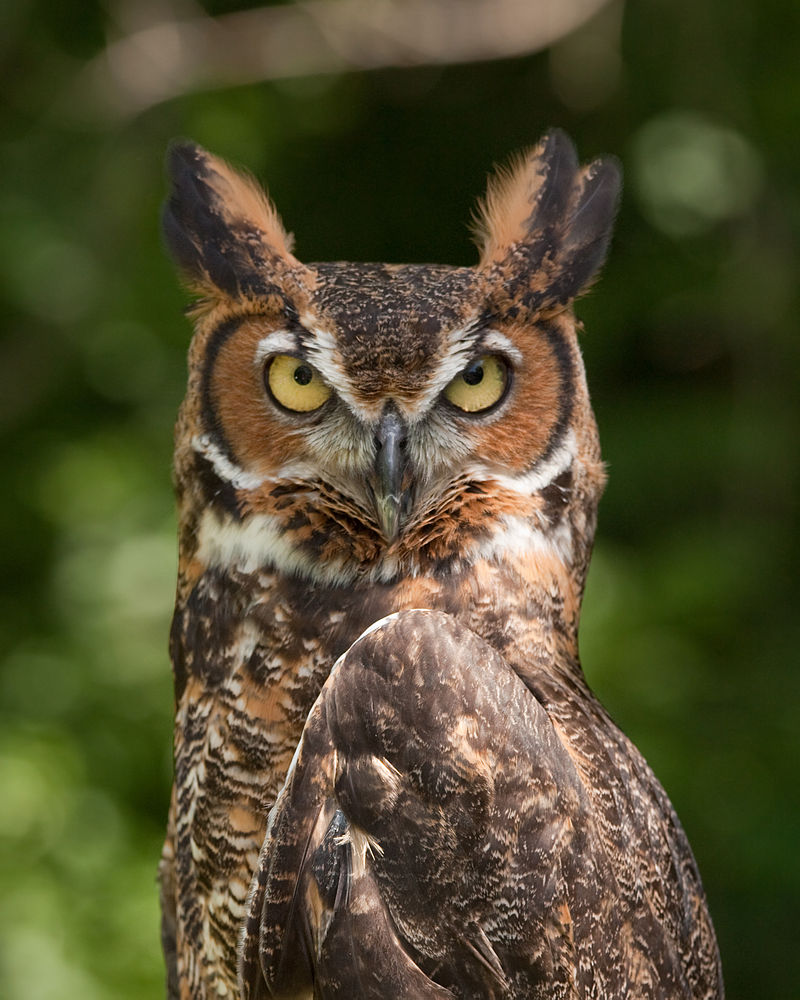
The Great Horned Owl is an impressive bird native to the Americas. It is well-known for its wide range and adaptability, as it can be found in many different habitats across the continent.
Its diet consists primarily of rabbits, hares, rats and mice; however, they are also known to consume skunks, geese and other birds too.
With their powerful talons capable of crushing prey with ease, these owls have earned themselves a fearsome reputation due to their incredible strength.
Their iconic horn-like tufts on either side of its head add another layer of intimidation which helps them stand out from other owls in the area.Scientific classification:
| Kingdom | Animalia |
| Phylum | Chordata |
| Class | Aves |
| Order | Strigiformes |
| Family | Strigidae |
| Genus | Bubo |
| Species | B. virginianus |
Also Featured In: Most Popular Bird Species in North America, Birds that Live in the Deserts
5. Killdeer
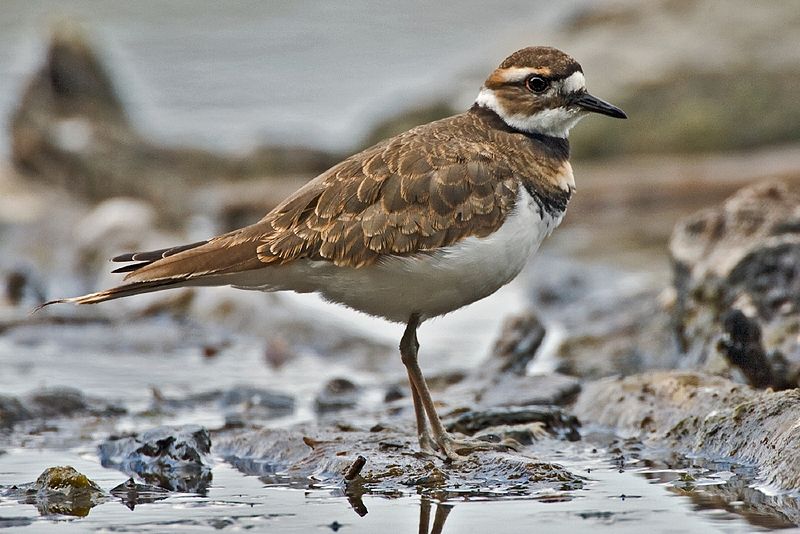
The Killdeer bird is a large plover found in the Americas. It has an unmistakable call which gives it its name, and boasts striking upperparts of brown with rufous fringes.
Its head features patches of white and black, while two distinctive bands adorn its neck – one black above, and one chestnut below.
The undersides are mostly white or pale buff-brown; their wings feature bright orange stripes when they take flight.
During breeding season males perform elaborate courtship rituals to attract females into establishing a pair bond; they also defend territories fiercely against other birds that encroach on them during this time.
In winter months some killdeers migrate southwards but many stay put throughout the cold weather too.
All in all these beautiful creatures provide us with quite a sight indeed.Scientific classification:
| Kingdom | Animalia |
| Phylum | Chordata |
| Class | Aves |
| Order | Charadriiformes |
| Family | Charadriidae |
| Genus | Charadrius |
| Species | C. vociferus |
Also Featured In: Most Common Lake Birds, Birds that Live in San Francisco Bay Area
6. Neotropic Cormorant
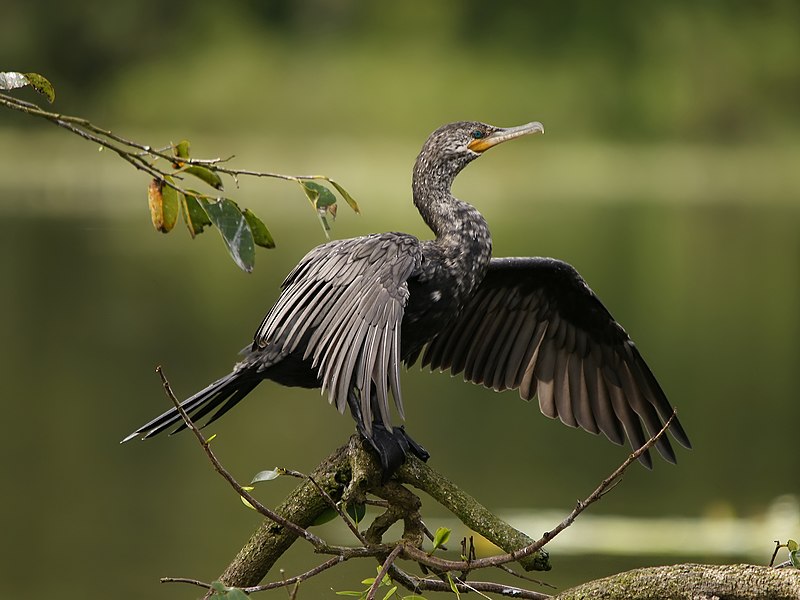
The Neotropic Cormorant, also known as the Olivaceous Cormorant, is a medium-sized bird found in tropical and subtropical regions of Central America, South America and the United States.
It can be identified by its black body with bright yellow facial skin on both sides of its large bill. The tail feathers are short and squared off at the tip.
This species breeds mainly on coasts but will sometimes nest inland near rivers or lakes during certain parts of their life cycle.
They feed mostly on small fish caught while diving underwater but can also eat crustaceans, amphibians and insects.
These birds roost in trees at night to keep safe from predators like foxes which prey upon them when they sleep close to water sources during daylight hours.Scientific classification:
| Kingdom | Animalia |
| Phylum | Chordata |
| Class | Aves |
| Order | Suliformes |
| Family | Phalacrocoracidae |
| Genus | Nannopterum |
| Species | N. brasilianum |
Also Featured In: Beautiful Brazilian Birds, Rainforest Birds You Should Know
7. Great-Tailed Grackle
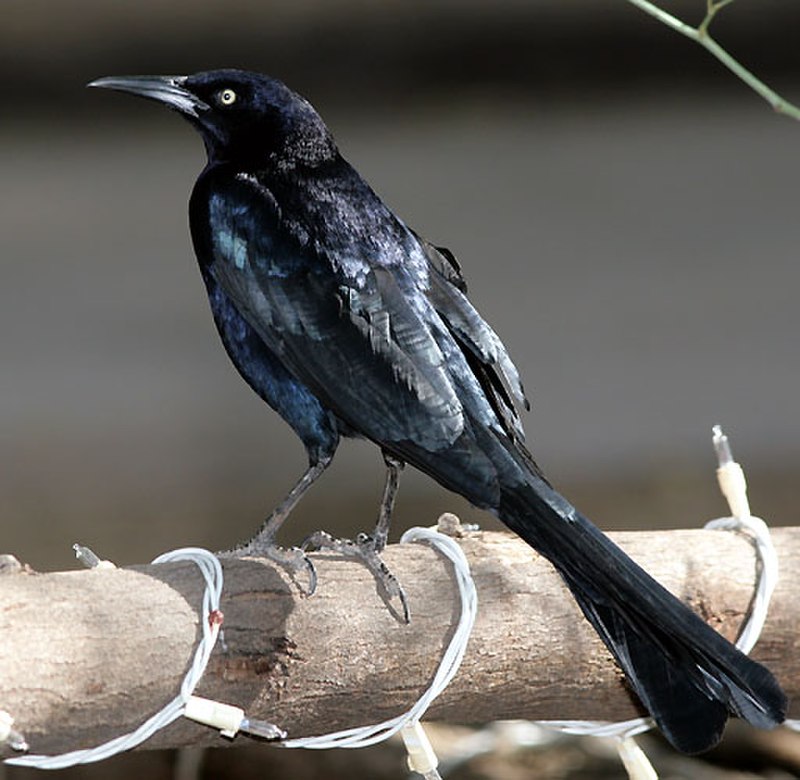
The Great-tailed Grackle is a medium sized bird native to North and South America. It belongs to the family Icteridae, making it closely related to two other species of grackles – the Boat-tailed and Slender-billed.
They are highly social birds which often appear in large flocks or colonies.
Their plumage ranges from glossy black with blue or purple iridescence, through brownish grey shades depending on location.
In some areas they have been known as “blackbirds” due their predominately dark colouring.
This adaptable species is also renowned for its distinctive long tail feathers – hence its name.Scientific classification:
| Kingdom | Animalia |
| Phylum | Chordata |
| Class | Aves |
| Order | Passeriformes |
| Family | Icteridae |
| Genus | Quiscalus |
| Species | Q. mexicanus |
Also Featured In: Top Birds Found in Mexico, Common Birds That Live in Las Vegas
8. White-Winged Dove
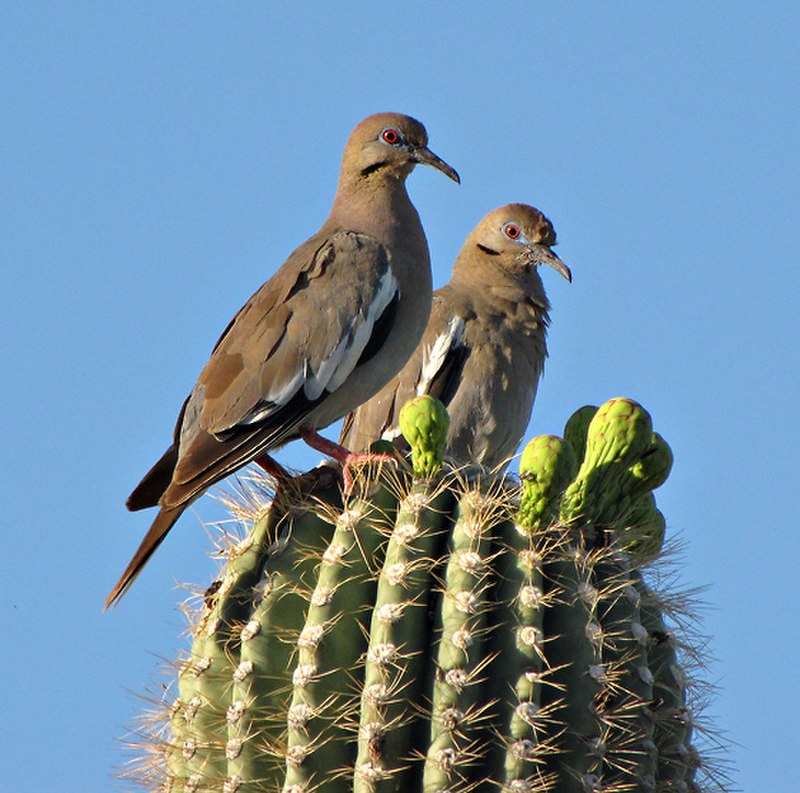
The White-winged Dove is an impressive bird with a large body and wingspan. Its distinctive feature is the white edge on its wings, which makes it easily recognizable when in flight.
It has blue eyerings, red eyes and gray plumage, while juveniles are duller in coloration than adults.
This dove species inhabits areas from Southwestern United States through Mexico to Central America as well as Caribbean islands.
They usually live close to human settlements or cities but can also be found in agricultural fields feeding on grains like corn or wheat seeds left by farmers after harvest season ends.
In their natural habitat they feed primarily on insects, fruits and small plants such as certain cacti species.Scientific classification:
| Kingdom | Animalia |
| Phylum | Chordata |
| Class | Aves |
| Order | Columbiformes |
| Family | Columbidae |
| Genus | Zenaida |
| Species | Z. asiatica |
Also Featured In: Phoenix Birds You Should Know, Birds You’ll Find in the Rio Grande Valley
9. Black-Crowned Night Heron
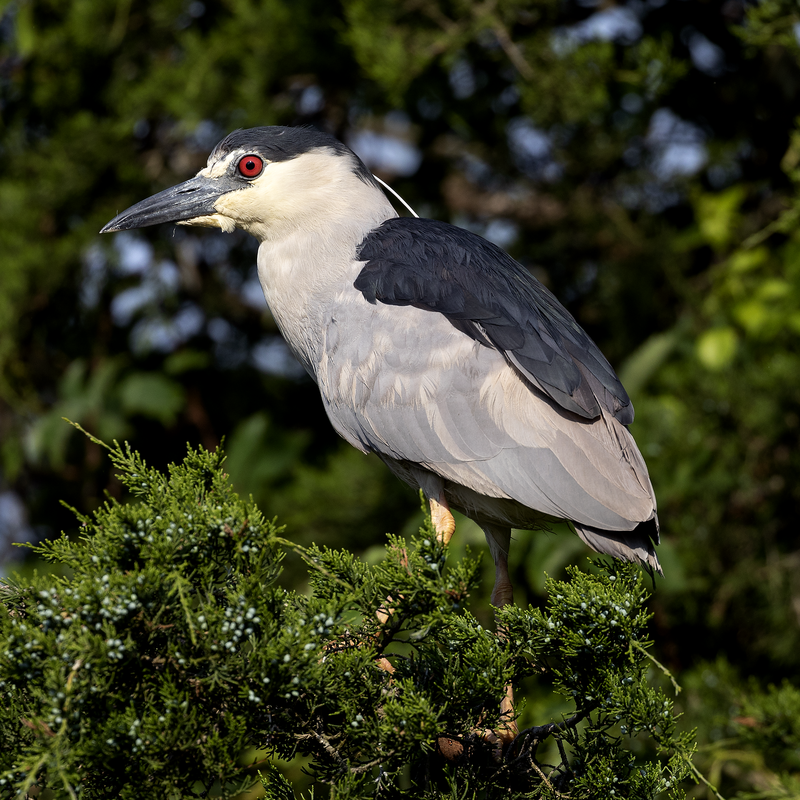
The Black-crowned night heron (Nycticorax nycticorax) is a medium-sized bird found in various parts of the world, including Europe, Asia and North and South America.
It has black crowns on its head with white feathers underneath. Its wings are greyish brown while its underparts are mostly white.
This species can be seen foraging near shallow water or along coastlines during dusk or dawn as it hunts small fish, amphibians and crustaceans.
They also feed on insects such as grasshoppers and beetles which they find in meadows close to freshwater bodies like lakes or ponds where they breed during springtime making nests using twigs lined with reeds and leaves near these waterside habitats.
In Australasia, this species hybridizes with the nankeen night heron that inhabits those areas instead; however both populations remain distinct from each other despite their overlap range regions.Scientific classification:
| Kingdom | Animalia |
| Phylum | Chordata |
| Class | Aves |
| Order | Pelecaniformes |
| Family | Ardeidae |
| Genus | Nycticorax |
| Species | N. nycticorax |
Also Featured In: Common Birds Found in Switzerland, Birds of Kauai, Hawaii
10. Black-Bellied Whistling Duck
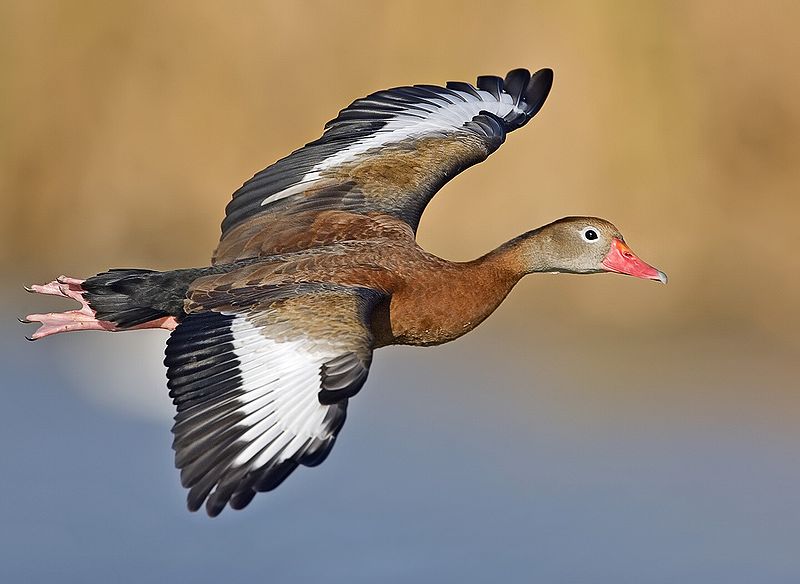
The Black-bellied whistling duck is a unique species of bird that can be found in the southern United States, Mexico, Central and South America. This small waterfowl has distinct black plumage on its belly which gives it its name.
Its call is also distinctive as it makes high pitched whistles to communicate with other members of its flock.
It prefers wetland habitats such as marshes, ponds and lakes where they feed on seeds and aquatic plants like wild rice or pondweed.
During breeding season these birds form monogamous pairs nesting in trees near bodies of water.
They are migratory birds but some may remain year round depending upon local climate conditions making them relatively common sights in certain areas during winter months when most other ducks have migrated further south for warmer weather.Scientific classification:
| Kingdom | Animalia |
| Phylum | Chordata |
| Class | Aves |
| Order | Anseriformes |
| Family | Anatidae |
| Genus | Dendrocygna |
| Species | D. autumnalis |
Also Featured In: El Salvador Birds, Birds that Live around Central Florida
11. Carolina Chickadee
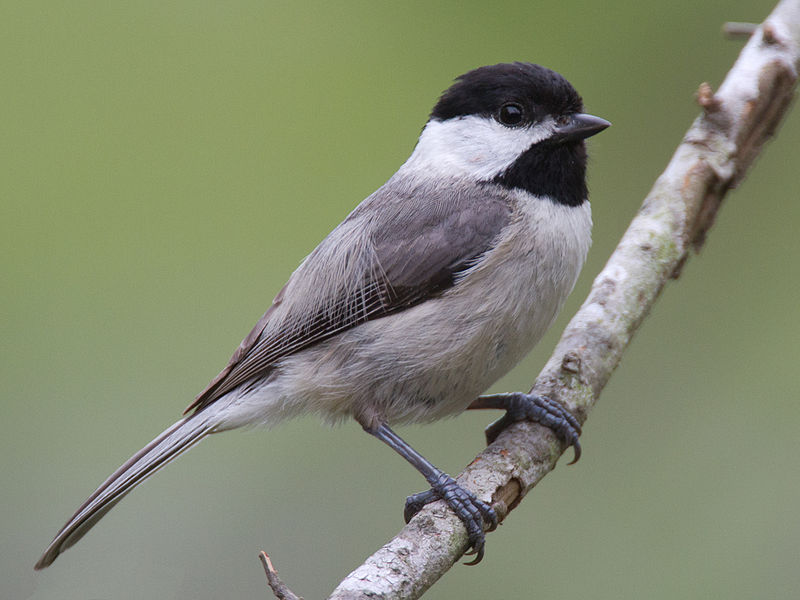
The Carolina Chickadee is a small passerine bird found in the tit family Paridae. It stands out for its distinct black and white, grey-brown feathers with an offwhite underside.
This species can be spotted by its call: “chick-a-dee”. The American Ornithologists’ Union has classified them into their own genus called Poecile as they differ from other tits due to both genetic data and morphology.
These birds are found all over North America, living in wooded areas near open fields or water sources.
They feed on insects such as caterpillars but also have been known to eat suet at backyard feeders during winter months when food is scarce.Scientific classification:
| Kingdom | Animalia |
| Phylum | Chordata |
| Class | Aves |
| Order | Passeriformes |
| Family | Paridae |
| Genus | Poecile |
| Species | P. carolinensis |
Also Featured In: Georgia Birds, Birds that Live in Mississippi
12. Ruby-Throated Hummingbird

The ruby-throated hummingbird (Archilochus colubris) is a species of hummingbird that has an impressive migration pattern, spending the winter in Central America, Mexico and Florida before flying to Canada and other parts of Eastern North America for breeding season.
It’s by far the most common type seen east of the Mississippi River in North America.
Formally described by Swedish naturalist Carl Linnaeus in 1758, this tiny bird has bright metallic green upperparts with white underparts, a small black bill and a red throat patch which gives it its name; they measure around 3 inches long on average.
They feed primarily on nectar from flowers but also eat insects such as flies or mosquitoes for extra protein during their migrations or when raising young chicks.Scientific classification:
| Kingdom | Animalia |
| Phylum | Chordata |
| Class | Aves |
| Order | Apodiformes |
| Family | Trochilidae |
| Genus | Archilochus |
| Species | A. colubris |
Also Featured In: New Hampshire Birds You Should Know, Summer Birds that Live around Us
13. Eastern Screech Owl
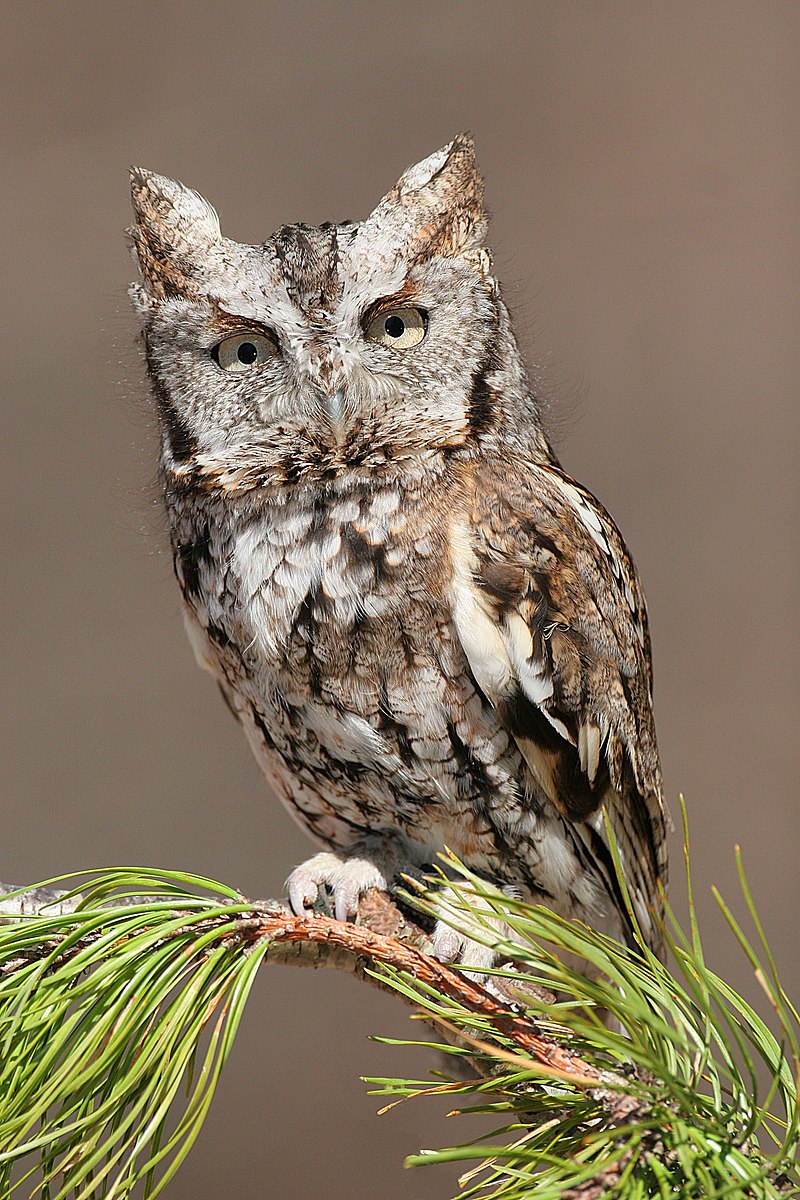
The Eastern screech owl is a small nocturnal bird native to most wooded areas in Mexico and Canada. It has adapted well to human development, making it relatively common in East North America.
This species is known for its unique call which often sounds like a horse whinnying or an electronic beep.
Its feathers are mainly grey with brown bars, but they can also range from red-brown to blackish-grey depending on the individual bird’s location.
They feed primarily on insects and other small animals such as mice and lizards that live near their nest sites at night.
The eastern screech owl is an amazing creature adapting well to humans while still managing to stay hidden under cover of darkness.Scientific classification:
| Kingdom | Animalia |
| Phylum | Chordata |
| Class | Aves |
| Order | Strigiformes |
| Family | Strigidae |
| Genus | Megascops |
| Species | M. asio |
Also Featured In: Birds You’ll Find in Zoo, Long Island Birds You Should Know
14. Cooper’s Hawk
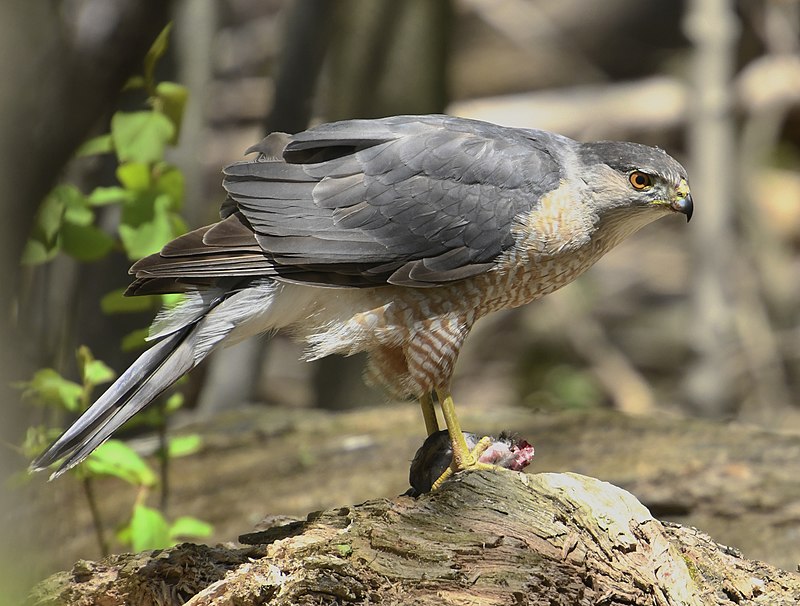
Cooper’s Hawk is a medium-sized bird of prey native to North America. It belongs to the Accipiter genus, which are known for their agility and small size compared to other hawks.
They usually inhabit wooded areas, making them well-adapted hunters in dense environments.
Cooper’s Hawks have rounded wings with short tails that help them maneuver quickly through trees when chasing after prey such as small rodents or birds.
These raptors also possess powerful feet equipped with sharp talons used for catching food items on the ground and even out of midair.
The adult plumage has barred upperparts, ranging from greyish brown on lighter individuals up to dark chestnut colors found in darker specimens; they also display rusty underparts marked by thin white streaking down either side of their chests and bellies.Scientific classification:
| Kingdom | Animalia |
| Phylum | Chordata |
| Class | Aves |
| Order | Accipitriformes |
| Family | Accipitridae |
| Genus | Accipiter |
| Species | A. cooperii |
Also Featured In: Common Southern Californian Birds, British Columbian Birds
15. Yellow-Crowned Night Heron
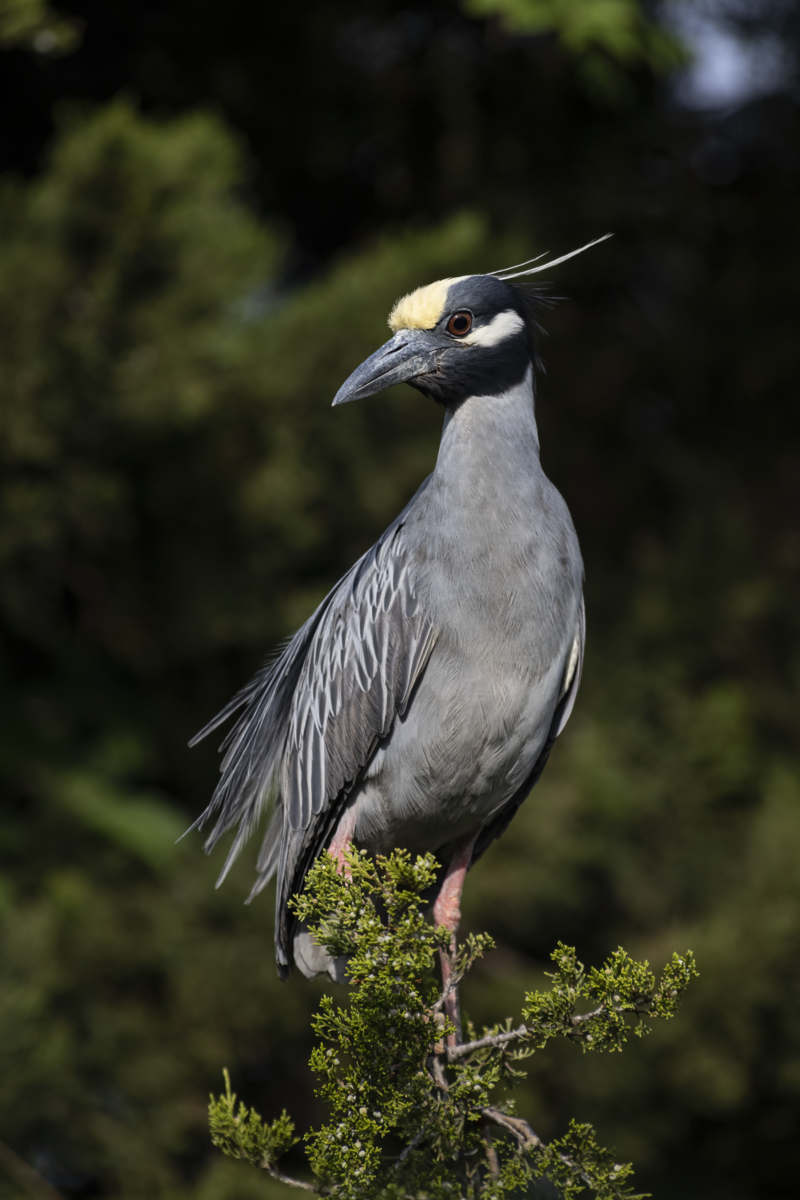
The Yellow-crowned night heron is a beautiful and unique species of bird native to the Americas. It has distinctive yellow crowns on its head, making it easy to identify among other herons.
These birds are also larger than most other types of herons, reaching up to 70 cm in length and 850 g in weight.
They usually feed on small fish or crustaceans while wading through shallow waters with their long legs.
The yellow-crowned night heron can be found near marshes or lakes during breeding season when they will build nests made from twigs high above the ground for protection against predators like raccoons and foxes.
This majestic bird is an important part of wetland ecosystems as it helps keep populations of smaller aquatic animals balanced by preying upon them.Scientific classification:
| Kingdom | Animalia |
| Phylum | Chordata |
| Class | Aves |
| Order | Pelecaniformes |
| Family | Ardeidae |
| Genus | Nyctanassa |
| Species | N. violacea |
Also Featured In: Bermuda birds, Flight Birds You Should Know
16. Laughing Gull
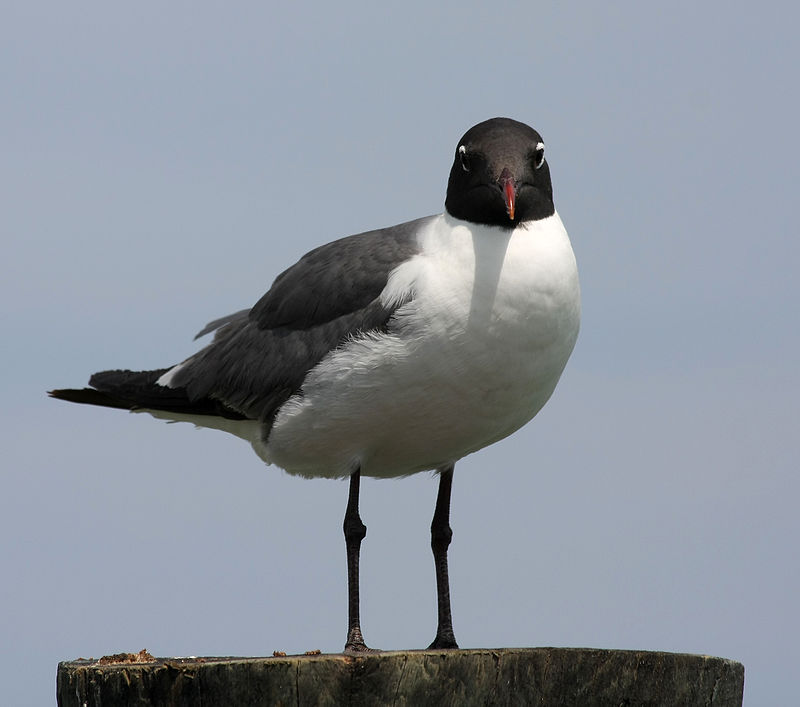
The Laughing Gull is a medium-sized bird with gray wings, black head and white underparts. It has bright red legs and bill which make it easily distinguishable from other gulls.
The name comes from its unique laughing call which can be heard in coastal areas throughout the Americas where they breed. They are opportunistic omnivores that feed on fish, carrion, insects or even garbage when available.
During breeding season these birds form large colonies along the Atlantic coast of North America as well as parts of northern South America and Caribbean islands.
There are two subspecies; L megalopturus found in Canada to Central America while L atricilla inhabits rest of their range..
These species have become more common inland due to human settlement near coasts creating ideal habitat for them but also making them scavengers around urban areas.Scientific classification:
| Kingdom | Animalia |
| Phylum | Chordata |
| Class | Aves |
| Order | Charadriiformes |
| Family | Laridae |
| Genus | Leucophaeus |
| Species | L. atricilla |
Also Featured In: Gulls Species, Birds You’ll Find in South Texas
17. Purple Martin
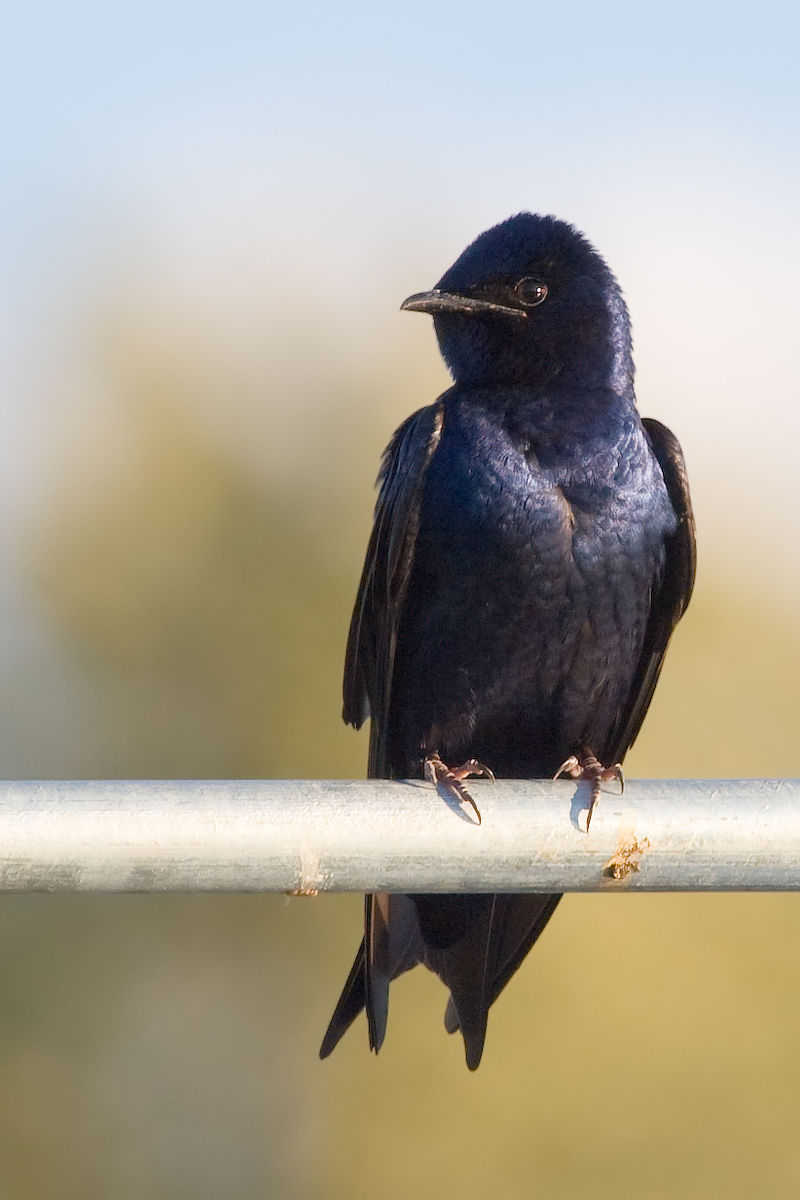
The Purple Martin is a beautiful passerine bird in the swallow family, and is the largest of its kind in North America.
It has dark blackish-blue feathers that have an iridescent sheen which can make them appear blue or deep purple depending on the light; they may even look green.
These birds are quite social creatures and often build communal roosts with multiple nests, having as many as hundreds of individuals living together at once.
They feed mainly on flying insects such as flies, moths, wasps and bees.
Their habitats include areas near bodies of water like lakes or rivers where there’s plenty for these birds to eat all year round.
The Purple Martin is truly an amazing species worth protecting.Scientific classification:
| Kingdom | Animalia |
| Phylum | Chordata |
| Class | Aves |
| Order | Passeriformes |
| Family | Hirundinidae |
| Genus | Progne |
| Species | P. subis |
Also Featured In: Swallows Species, Birds That Live in Colorado
18. Common Nighthawk
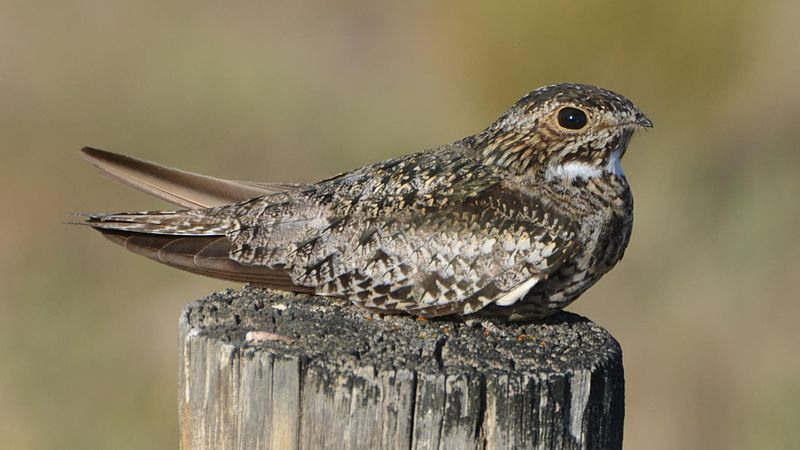
The Common Nighthawk is a medium-sized nocturnal bird of the Americas. It has dark grey, black and brown cryptic colouring which makes it difficult to spot during the day.
They are most commonly found in open fields or near water sources such as rivers and lakes with tall grasses and trees for shelter from predators at night.
Its identity can be easily revealed through its vocalization – a loud “peent” sound that they make while flying around looking for food like beetles, moths and other insects.
During mating season their display flight includes steep dives followed by sharp climbs accompanied by their distinctive call making them even easier to identify.Scientific classification:
| Kingdom | Animalia |
| Phylum | Chordata |
| Class | Aves |
| Order | Caprimulgiformes |
| Family | Caprimulgidae |
| Genus | Chordeiles |
| Species | C. minor |
Also Featured In: birds of Vermont, Central Texas Birds